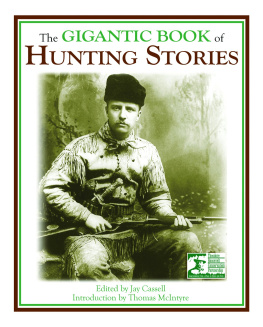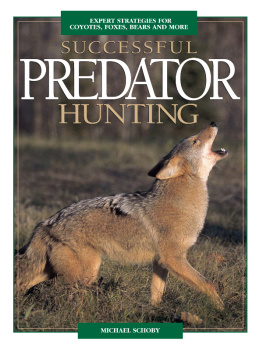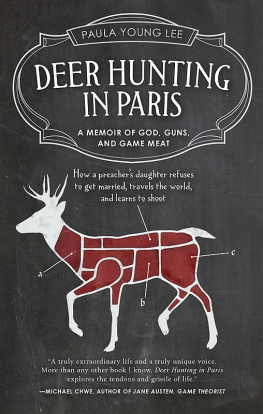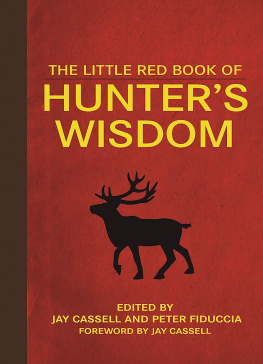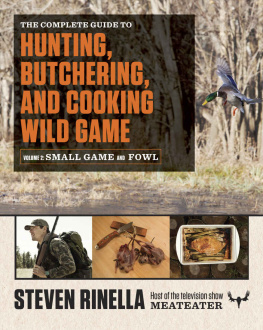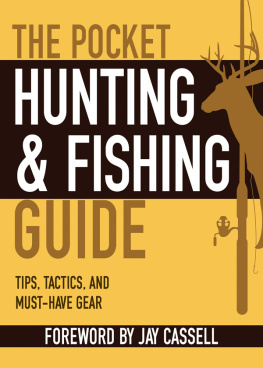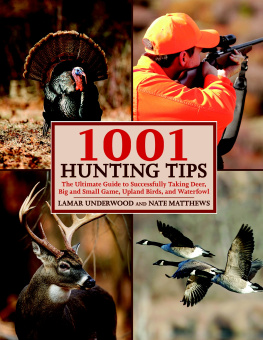
Copyright 1996 by Tom Huggler
Illustrations 1996 by Jim Foote
First Skyhorse Publishing edition 2014
Introduction 2014 by Charley F. Waterman
All rights reserved. No part of this book may be reproduced in any manner without the express written consent of the publisher, except in the case of brief excerpts in critical reviews or articles. All inquiries should be addressed to Skyhorse Publishing, 307 West 36th Street, 11th Floor, New York, NY 10018.
Skyhorse Publishing books may be purchased in bulk at special discounts for sales promotion, corporate gifts, fund-raising, or educational purposes. Special editions can also be created to specifications. For details, contact the Special Sales Department, Skyhorse Publishing, 307 West 36th Street, 11th Floor, New York, NY 10018 info@skyhorsepublishing.com.
Skyhorse and Skyhorse Publishing are registered trademarks of Skyhorse Publishing, Inc., a Delaware corporation.
Visit our website at www.skyhorsepublishing.com.
10 9 8 7 6 5 4 3 2 1
Library of Congress Cataloging-in-Publication Data is available on file.
Cover painting by Jim Foote
Illustrations by Jim Foote
Print ISBN: 978-1-62914-602-7
Ebook ISBN: 978-1-62914-944-8
Printed in the United States of America
For Ellen VanDeMark
for showing the way
COLOR PLATES
C ONTENTS
A CKNOWLEDGMENTS
Many people helped make this book possible, including a host of friends and acquaintances whose names are contained within. They shared their private woodcock coverts, invited me into their homes, answered my incessant questions, and put up with my muddy dogs and bad jokes.
I wish to thank Art DeLaurier Jr. and Angela Saxon for steering this book through the process of judicious editing, design, layout, and printing. The work is as much theirs as it is mine.
It also belongs to Jim Foote and his wife, Joanne, who encouraged the idea from the outset. They supported it with enthusiasm and graciously contributed all the artwork between these covers.
I owe special thanks to my wife, Laura, who has a better ear for language than I do, especially when the words are my own.
fall: an alleged name for a covey or flight (of woodcock). Obsolete. Circa 1430 .
Oxford English Dictionary
To travel well within your neighborhood is the greatest of journeys.
Samuel Johnson
I NTRODUCTION
BY C HARLEY F. W ATERMAN
Woodcock hunting tends to be for life, as it seems to be for Tom Huggler. The little game bird with the great mysteries has long attracted fine writing from fine writers, but few author-gunners have followed it as Huggler has. His travels are similar to those of the bird itself, guided by season, weather, and even rumor.
His book is filled with woodcock knowledge but runs almost as a gunners autobiography, beginning with juvenile operations and typical youthful armament and going through the serious hunters trial-and-error choices until he has drawn his own personal conclusions about things like guns and loads. But he does not let the practical sides of woodcock shooting or woodcock biology interfere with the important partthe sentiment that clings forever to the woodcock follower, his dogs of today and yesteryear, and the autumn winds and weather that guide the fragile subjects to ordained destinations.
Tom Huggler tells of woodcock hunters, guides, and researchers from Canadas Maritimes to Louisiana and he lives very near to both woodcock and woodcock watchers in Michigan. His travels have frequently been in motor homes and his routes are obviously changed with news from the skimpy woodcock grapevines.
Like others who live much of the time in travel rigs with dogs and guns, Tom Huggler is likely to go into considerable detail concerning food and wine and reveals some opinions on woodcock recipes, while giving the impression of being pleased that less fortunate outdoorsmen consider woodcock unfit for consumption.
The Huggler bird dogs have varied from family treasures to hopeless bums, but we feel that some of the bums have, nevertheless, been valued companions. He wryly tells of his misjudgments on woodcock dogs and confides that he now feels any gun dog should make a start with a professional trainer. Some of this is uncomfortably close to home for upland gunners who recognize their own fumbles in the writers canine misfires, but a bird shooting reader is likely to feel he is dealing comfortably with a kindred soul, which he is. This is a woodcock authority who has paid his dues, and the reader squirms with him when the gun somehow doesnt track and is relieved when Huggler begins to hit again with a new shotgun or a new approach.
Good teachers are likely to be good students and this writer gains woodcock knowledge as he goes and looks forward to tomorrows revelations. He treats known woodcock experts with respect, and even reverence, and has a special regard for the veterans of today and yesteryear who have traced the little ghost birds through their times of plenty and adversity. Woodcock are important to him and his readers feel it.
Although he has followed woodcock for all those years he leaves the impression that each day with his beloved aspens or abandoned railway grades is likely to reveal some treasure of new information about them. He complains mildly about the hunting restrictions that come with advancing age and apprehensively wonders about his next twenty or thirty years. There is the feeling that his views are those of all the worlds woodcock hunters.
Here with the carefully researched facts and figures from well-known woodcock authorities, including biologists (he seems to know most of such people), are his own observations about wind and weather that seem pleasingly out of place with the relaxed narrative of a wandering gunner. It appears, he says, that woodcock follow highways as well as riversbut are they sure of the difference as they ride the chill of autumn night winds?
There is a ridiculous feeling that woodcock may have helped write this book.
Charley F. Waterman
P ROLOGUE
A friend and I were driving through Ontarios Algonquin Park one May morning when he suddenly slammed on the brakes, his van squealing to a halt. Sorry, he apologized, but I didnt want to hit that bird.
Bird? I wondered, recomposing myself and thankful that he didnt put me through the windshield because I wasnt wearing a seat belt.
My friend pointed to the asphalt, and sure enough a buff-colored bird with a lance for a bill wobbled across the highway like a bowling pin about to tip over.
Its a woodcock, I said and jumped out for a better look. A yard or so behind the hen bird in single file marched four yellow-and-brown chicks that looked like overgrown bumblebees with gigantic, misplaced stingers. That was the first and only time I have ever stopped traffic to assist a family of woodcock across a road.
Woodcock have fascinated me most of my life. Although the incident occurred many years ago, I remember it well. A mile farther down the road, my friend braked his van once again to avoid hitting a moose. This time I was wearing my seat belt.
It is the woodcock encounter that I remember with greater clarity, and so it is often that way with the smaller wild things. No sailfish or huge Chinook salmon adorn my office walls. In their place are a three-pound brook trout and a twenty-one-inch-long grayling. Upstairs in the living room, no deer and bear heads stare into space with glass eyes, but native grouse and quail peer out from glass-encased dioramas.


